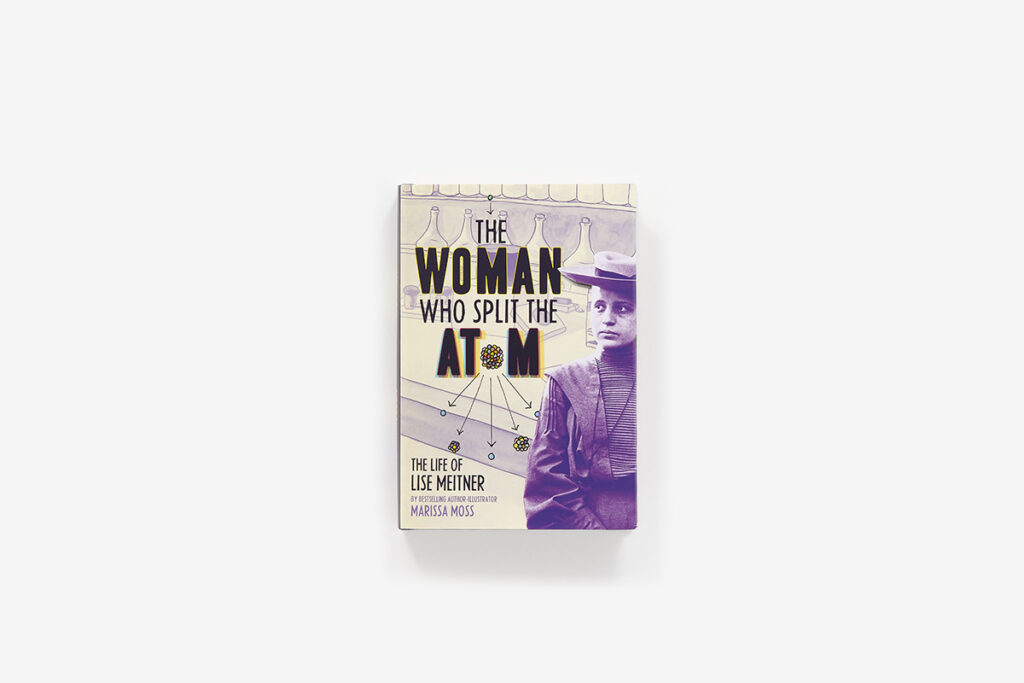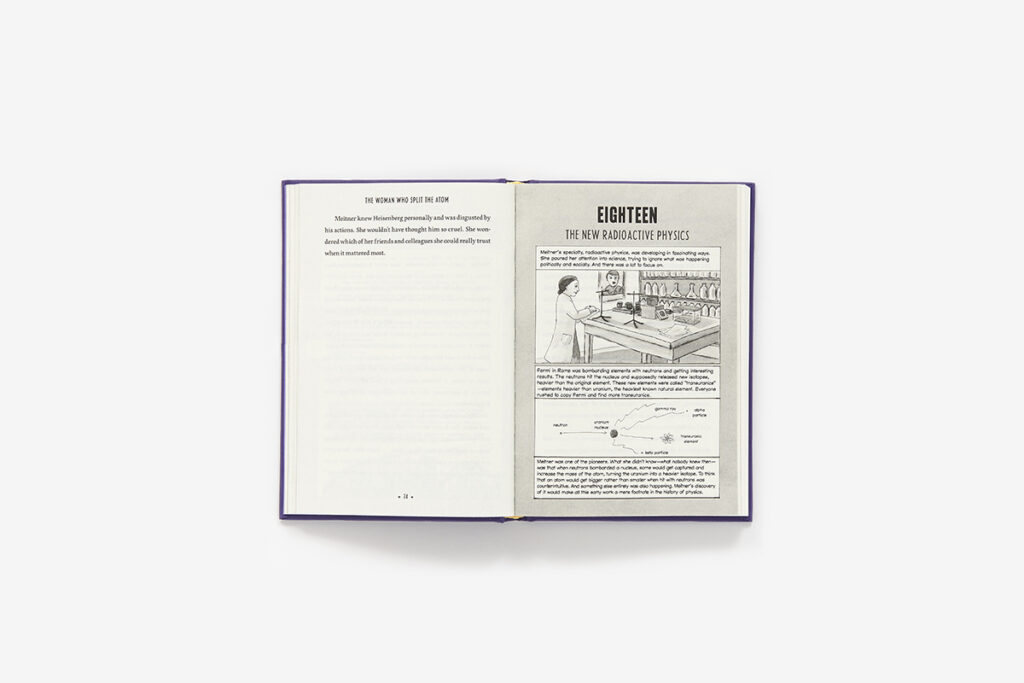The Woman Who Split the Atom is a fascinating, entertaining, non-fiction book that dares you not to enjoy it. That’s a big claim, especially when you consider that the key group that the book is going after are those middle school, mglit readers who can be notoriously fickle. Now, factor in that the book is the true story about a scientist whose groundbreaking work as a physicist changed the world. Oh, and this physicist is a Jewish woman who you probably haven’t heard of who did the bulk of her research in Germany in the early 20th century. With all of that going against it, the book tells the story of Lise Meitner in a way that even the most reluctant middle school reader will eagerly turn the pages to see what happens next.

The book upends the way that traditional non-fiction, mglit is presented in a manner that’s respectful to the subject matter, further explains the story, and adds context for those readers that might require some. There are 40 chapters, each of which has a variety of lengths, from three to maybe eight pages. The start of each chapter has a bridge paragraph or two that extends the part where the previous chapter ended and a realistically drawn cartoon that explains where the current chapter is going.
Within the illustration, there might be some dialogue that infers what’s really happened in the story or what the people at the time were really thinking. Keep in mind that this was pre, during, and after WWII, so speaking the direct truth to those in power, especially if you were a Jewish woman was not done. This context in The Woman Who Split the Atom has the same dry effect that Nathan Hale does so well in his Hazardous Tales series. It’s not meant or played for laughs and helps those younger readers really understand what’s happening.
The introductory page to each chapter, combined with the varying chapter length, as well as, the simple, direct, personable, and very thoroughly researched story makes the life of Lise Meitner a great book to sit down with. Physics, physicists, nuclear theory, Nazism, and WWII are not easy subjects to contain in a package that kids will want to read. It’s either too complex (nuclear theory or physics) or something that’s too close to a history topic they’re reading about in school.

So, how can one create a compelling mglit book about one of the top physicists in the history of the world and make it seem like an adventure book, without trivializing its story or her struggles? I don’t know, but Moss has crafted each chapter to end on a cliffhanger. It’s not a cheesy cliffhanger, rather, it’s one that acknowledges what they’ve accomplished so far, but it also alludes to greater dangers or challenges ahead.
And let’s be clear there are dozens of situations, historical events, scientists, and political figures that could easily muddy people’s understanding of the story as they read the book. For example, there are 49 other scientists that are referenced in the book, some more than others. Most of these physicists or scientists were at one time opposed to Meitner because she was a woman. As her scientific credibility became more well known she was then minimized because she was a Jewish person. As the throws of Nazism grew in Germany it was challenging for her to find support to do research, much less be confident that she wouldn’t be sent to a concentration camp.
So, just how did this Jewish woman, in a time where women represented the minority in any working environment, come to solve an atomic riddle that had vexed physicists for decades? And since she solved it, why didn’t the Germans use her knowledge for their military purpose? This also opens up the question of should it have been used, and Meitner was a staunch supporter of using the atom-splitting power for energy, and not to be used as a weapon. These questions are compounded when you’re reminded of the fact that Germany surrendered before the United States dropped the bombs on Japan.
The Woman Who Split the Atom addresses every angle of Meitner’s life, as well as, the different mindsets of people involved. It’s a book that makes you think and rewards curiosity with a well-thought-out look at a complicated era of world history. This is also a book that grades 6 and up (way up) will enjoy reading. If they want a deeper dive into her life, a timeline of events that happened in the book, or a proper definition of terms used in the book (it is about a physicist after all), then that can all be found in the back. If you’re a reader who is averse to history then this book is your kryptonite.
The Woman Who Split the Atom, The Life of Lise Meitner is by bestselling author-illustrator Marissa Moss and available on Abrams Books for Young Readers, an imprint of Abrams Books.
There are affiliate links in this post.





 Facebook
Facebook Twitter
Twitter Flickr
Flickr GooglePlus
GooglePlus Youtube
Youtube